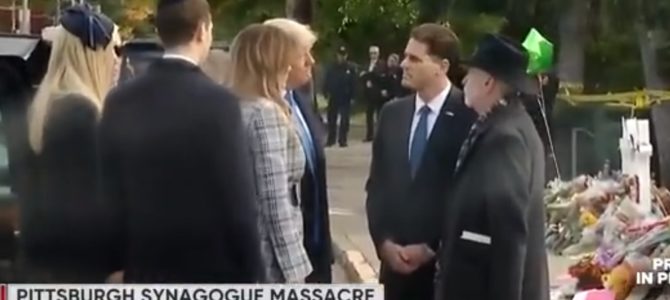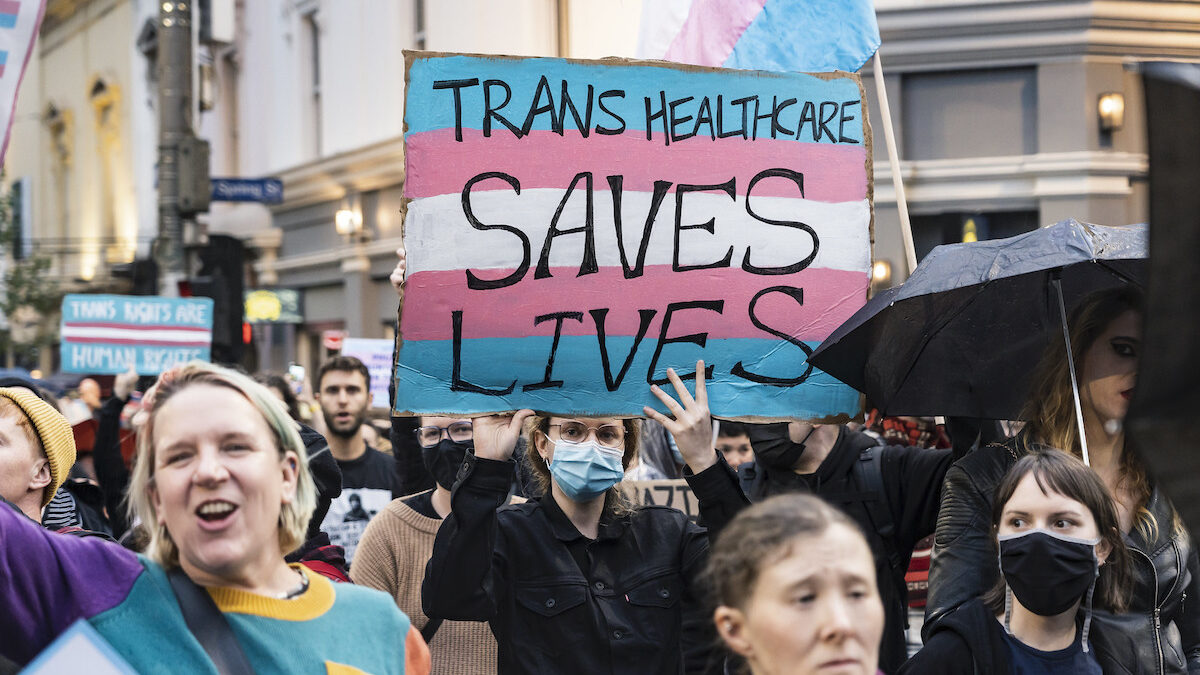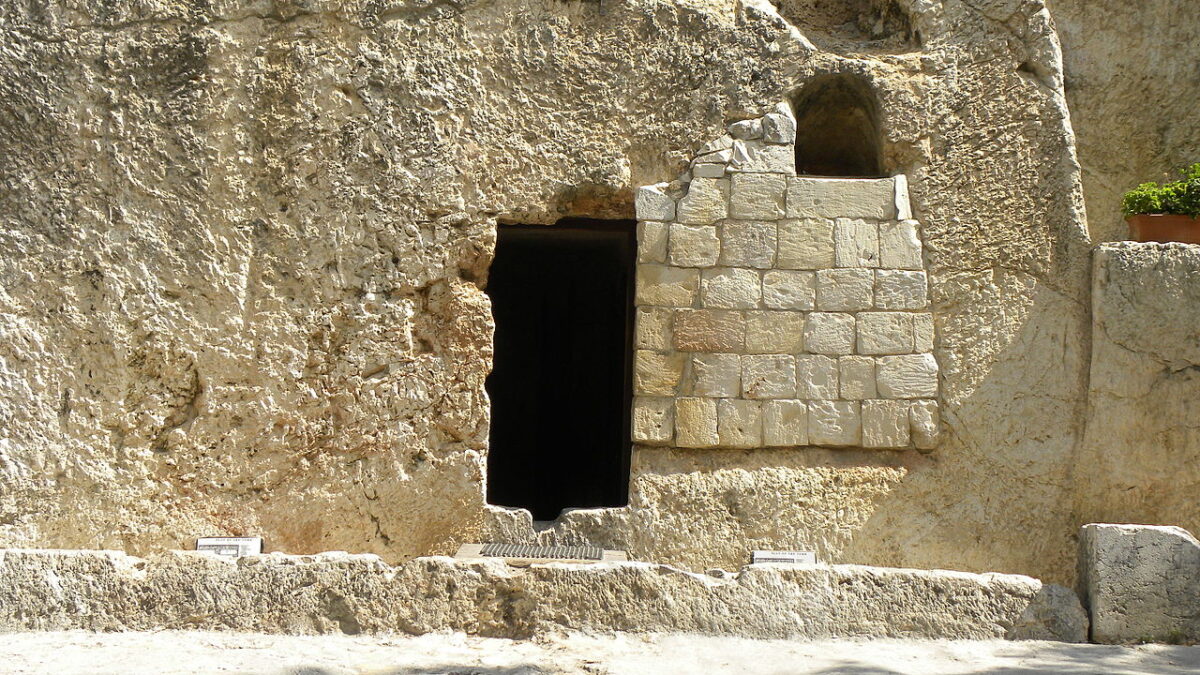
One of the very first things a Jew ever told me was that choosing to become Jewish meant choosing to become a target of hatred and potential violence. I would be told many times over the years, “When they come for the Jews, they will come for you too.”
Whenever I visited the synagogue to explore this new faith, Jewish congregants would quiz me on my intentions. Upon learning I was considering conversion they would always, always, warn me away. Comments like, “That is a very risky thing to do, you know” and “You are choosing a difficult life” were more common than I had expected.
The books I read, while celebrating the choice itself, all warned of the same concerns faced by all Jews all over the world. But I pressed on, believing myself to be fortunate enough to live in a more open, enlightened, and safe world.
When our synagogue welcomed a new rabbi, a convert herself, one of the first things she did was suggest that our community invest in a nice big sign outside the building with our service days and hours, directions to enter the building, and perhaps a humorous biblically inspired quote now and then. She unsuspectingly set off a wildfire of outrage that caused enough controversy to require a temple meeting and her to back away slowly from the notion.
At the time I was utterly baffled at the reaction, thinking back to the first time I had unsuccessfully tried to find the right door to enter for an evening service at which I had arrived an hour early because I couldn’t find the service information anywhere, including the internet. But my Jewish family patiently explained to me that the reason behind the controversy was that the congregation did not want people who intended to harm us to know how and where to find us.
The building was designed to mimic the structure of a cathedral, built during a time when Reform Jews shunned even the wearing of yarmulkes inside the temple and insisted upon playing a pipe organ so passersby would think it was a church. When I began innocently wearing a yarmulke around town, I received similar displeased reactions that essentially boiled down to a fear of drawing unnecessary attention.
Few things confused me more than the obsession with safety and maintaining a low profile. In my world, people didn’t care what religion you were, and no one I ever knew had ever expressed anything I would interpret as anti-Semitic. The fear just did not make sense to me in a modern setting.
It took a personal experience of being the target of hatred to appreciate the root of this anxiety. In the spring of 2009, a Muslim friend sent me a Facebook invite to an event on my college campus. The event was presented as an open dialogue on Middle East politics based on the documentary “Occupation 101.”
I had taken several Arabic and religious studies classes and had many Muslim friends. I was active in my congregation and part of the Yiddish choir, and so I knew enough about Israel to feel interested in going. I felt torn, however, as the more I found out about the film, the more I realized how much of a conflict it would force me into.
“Occupation 101,” according to IMBD, is a “thought-provoking and powerful documentary film on the current and historical root causes of the Israeli-Palestinian conflict and U.S. political involvement.” But, like much of the pro-Palestinian discussion, it was far from unbiased.
I went to my synagogue, spoke with Jewish leaders, and reviewed the film. Once we realized it went beyond political discussion into overt anti-Semitism, we organized a response event. Within a day the event blew up into a massive controversy. The Muslim students, unanimously on the pro-Palestinian side, quickly began accusing the university of being controlled by Jewish influences attempting to silence the film. My Muslim friend accused me of being an advocate of genocide, a baby-killer, and a racist.
At the event, Muslim and liberal students loudly protested and screamed at Jewish and Christian counter-protesters, taking our fliers out of our hands and declaring our very presence to be hate. The dean of the liberal arts college opened the event cautioning us that a suicide bomber was truly a freedom fighter when put in the right context. The question and answer period devolved into shouting and flying accusations, which dissolved into an hour or more of people arguing afterwards.
This is not uncommon on American college campuses. The Daily Beast reported a shocking level of anti-Semitic hate at the University of California at Berkeley in 2015. Alongside swastikas and anti-Semitic graffiti, they report “sidewalk graffiti on campus that exhorted ‘Death to Israel’ and ‘Kill all the Jews.'”
The AMCHA Initiative, a Jewish organization, stated that their 2015 study “provided for the first time a quantitative account of the prevalence of anti-Semitic activity at schools most popular with Jewish students, as well as ample empirical evidence showing that the presence of anti-Zionist student groups, faculty boycotters and anti-Israel Boycott, Divestment, Sanctions (BDS) activity are each strong predictors of anti-Jewish hostility.” The study also confirmed that anti-Semitic incidents were more common when faculty members engaged in anti-Israel boycotting.
The BDS movement, the anti-Zionist movement, and pro-Palestinian activity are almost exclusively left-leaning or Islamic-driven efforts on college campuses as well. The co-founder of the Women’s March, Tamika D. Mallory, attended a remarkably anti-Semitic event by Louis Farrakhan, who recently compared Jews to termites. Yet Mallory praised him on social media.
Linda Sarsour, another leader in the Women’s March, openly embraces anti-Israel sentiment and has expressed anti-Semitic stereotypes about “Jews in the media.” The Anti-Defamation League has addressed many anti-Semitic and anti-Israel positions taken by Black Lives Matter leaders and supporters and listed the Nation of Islam and multiple imams for perpetuating anti-Jewish hatred, in their 2017 study on anti-Semitism.
Unfortunately, Islamic and progressive anti-Semitism tend to get dismissed or excused, while white supremacist rhetoric gets a lot of attention. It cannot be denied that there has been a more aggressive and vocal presence of this rhetoric. Paul Nehlen, a Republican who ran against Paul Ryan, posted a hate list of Jews he accused of publicly attacking him (which included me). Nehlen has been a vocally anti-Semitic voice, and he gathered a disturbingly large following on social media before he was banned. But pretending the issue is exclusively in this domain denies a great deal of evidence on how anti-Jewish bigotry impacts our country.
When I read about the lives lost in Pittsburgh over the weekend and how the victims were all of the age group that expressed such concern over a building sign in my own congregation, I realized how deep the pain of anti-Semitism runs. While I grew up completely unaware of the realities of this specific and profoundly destructive form of hatred, the people I would one day choose to join knew it with a nuance I would never master.
But I also know that the modern left and the media seem determined to ignore what amounts to politically inconvenient facts in favor of their “blame Trump, ask questions later” obsession. Instead of recognizing the horror that a generation of Jewish Americans watched a deeply held fear come true despite decades of being told that threat was over, they seem content to focus on petty, vindictive politics.
What we saw was an act of pure hatred. It was terrorism. It was irrational and unpredictable, and it was devastating. But it was not caused by the current sitting president or Fox News or any content on the internet. When I walked into that conference room I saw genuine disgust and hatred in the eyes of many people there. I know that feeling today when I encounter far too many on the left who judge me as a person based on their prejudices of what they think I believe and therefore who they think I am.
If the left wishes to fight “hate,” they have a great deal of self-reflection to work through first. It is not Farrakhan that scares me, but the hundreds of cheering people at his rallies when he says hateful things about Jews. It is not various platforms allowing anti-Semitic speech that worries me, it is the underground of radicalization we cannot see or prepare for.
When I see Twitter ignore Farrakhan’s anti-Semitic tweets and mainstream progressive voices dismiss concerns, it is far more disturbing to me than any green frog ever could be. Professors on college campuses and leftist advocacy groups spreading lies and hatred of Israel are just as much of an incubator of radicalization as online groups sharing conspiracy videos of Jews controlling the world. Sometimes they are difficult to distinguish from one another.
I am a Jew and I am grateful for the choice I made, even knowing what I was first warned about so many years ago is true. After years as an advocate for Israel and as a conservative voice, I understand the anxiety surrounding anti-Semitism and the helplessness of not understanding why people hate you so deeply. But I also know there are genuinely good people in the world, as this tweet I posted demonstrates.
Someone wrote this in front of my synagogue.
We have to remember the vast majority of people are good and kind. Twitter is not real life. pic.twitter.com/7uL6QbTSbK
— Chad Felix Greene (@chadfelixg) October 30, 2018
Fighting hate is a much larger challenge than simply banning random Nazis from the internet or blaming President Trump for “dog whistles.” It takes the recognition that hatred itself is a choice that is only conquered through acts of kindness and community. But this also requires rejecting the exploitation of tragedy for politics and the dismissal of hate when inconvenient, and agreement as a society to treat anti-Semitism as a threat wherever it shows itself.









